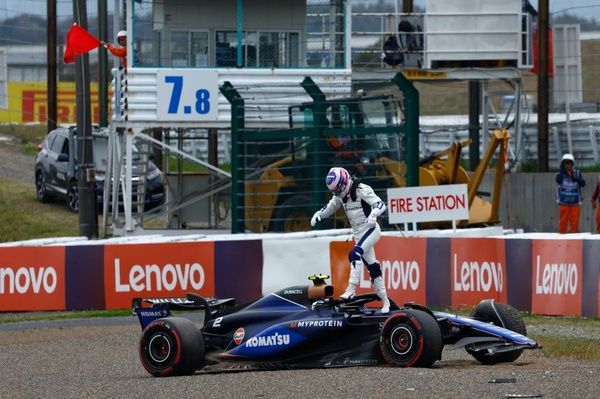Interview with Force India's Roberts
As part of Force India's new partnership with McLaren and Mercedes, former McLaren man Simon Roberts has moved across to the Silverstone-based team as chief operating officer

Prior to the debut of the new Force India-Mercedes VJM02 at Jerez today, Roberts spoke exclusively to autosport.com about how the relationship was progressing so far, and how he expected 2009 to pan out.
Q: Last year the team was just off the back of the midfield pack, so is it more a case of getting a few rows forward to be in the thick of it rather than jumping six rows up the grid?
Simon Roberts: Yes. The trouble is everything is mixed up this year with the regulations. In winter testing it all looks very tight. We are realistic, we want to be able to get points when the opportunities are there.
Q: Are you confident that the team have got the resources to keep up with the pace of development?
SR: We no longer have to design and make the gearbox, so all the resource that was doing that can now focus on other areas of the car. We were using customer engines anyway before, so in general we feel on the technical and engineering side, we've got the right number of people deployed in the right areas. I'm not saying the others can't do it, because they will do, but we don't feel under-resourced.
Q: Does the fact that this is a year of major rule changes help and is the timing fortuitous because of that?
SR: It probably is. What will happen is the cars are going to evolve very quickly. Early on, some teams will get lucky because they've got a good, competitive package and some will be unlucky. But however it starts, people will very quickly migrate to the sorts of areas of the car where it is clear you can get an advantage or catch your competitors.
It's going to be about agility. How quick can you put changes on, and obviously that is impacted on by the lack of testing. We might get lucky, maybe our car comes out of the box with exceptional performance. If it does, others will catch up quickly. If it comes out where we expect, to be a midfield contender, we are going to have to work hard to stay there because other people are going to be improving.
Q: The McLaren-Mercedes link-up is a massive change. How much do you get from them?
SR: We effectively received an engine and gearbox package so obviously with that you get all the installation points and the hook ups and all the data you need to support it.
So effectively over a period of probably a couple of weeks there was a lot of detailed discussion about how much cooling you need and stuff like that. But not on actually how to achieve it, so the guys here had to convert all that into what it really means in terms of the design of the car, the design of the radiators and then execute that into the VJM02. There are questions exchanged every week but it's now in the detail of fundamental installation stuff down to what torque you apply to the bolt that holds the engine to the chassis.
Q: What is your KERS status?
SR: We are still looking at it at the minute. We have the ability to run the same KERS system as McLaren-Mercedes. It's plug and play. We are just looking at the whole performance benefit of it at the moment. Our expectation is that as the season develops it will become more important to have a competitive KERS package. Early on, different teams will struggle to realise its potential or even make it through some of the races. The start of the season will be a bit of a shakeout for KERS but from mid-season onwards it will be a big differentiator and we will be well-placed to use that.
Q: The launch of the car is pretty late, are you confident you have enough time to get a handle on the car?
SR: We had a good shakedown, which is a great place to start and the build went relatively easily. That's a great measure. When the guys volunteer the fact that it was a nice car to put together that's a pretty good indicator because you know that it is going to be easy to work on and the mechanics are going to be able to work with it very quickly.
There are pros and cons to a late launch. It means that our aero package fundamentally is a late-release aero package so we won't be hitting the car now with a big upgrade as some other teams have. What we have has been in the tunnel longer and that helps in terms of performance. But it's balancing the risk with lack of mileage.
But given the engine and gearbox has been running around reliably in the back of the McLaren we are not worried about that. Again, it just means we can focus on the rest of the car. From a systems point of view, everything worked as planned on Wednesday. I guess it's just now us learning about the 2009 regulations, weight balance and tyres and we've only got eight days.
Be part of the Autosport community
Join the conversationShare Or Save This Story
Subscribe and access Autosport.com with your ad-blocker.
From Formula 1 to MotoGP we report straight from the paddock because we love our sport, just like you. In order to keep delivering our expert journalism, our website uses advertising. Still, we want to give you the opportunity to enjoy an ad-free and tracker-free website and to continue using your adblocker.



















Top Comments